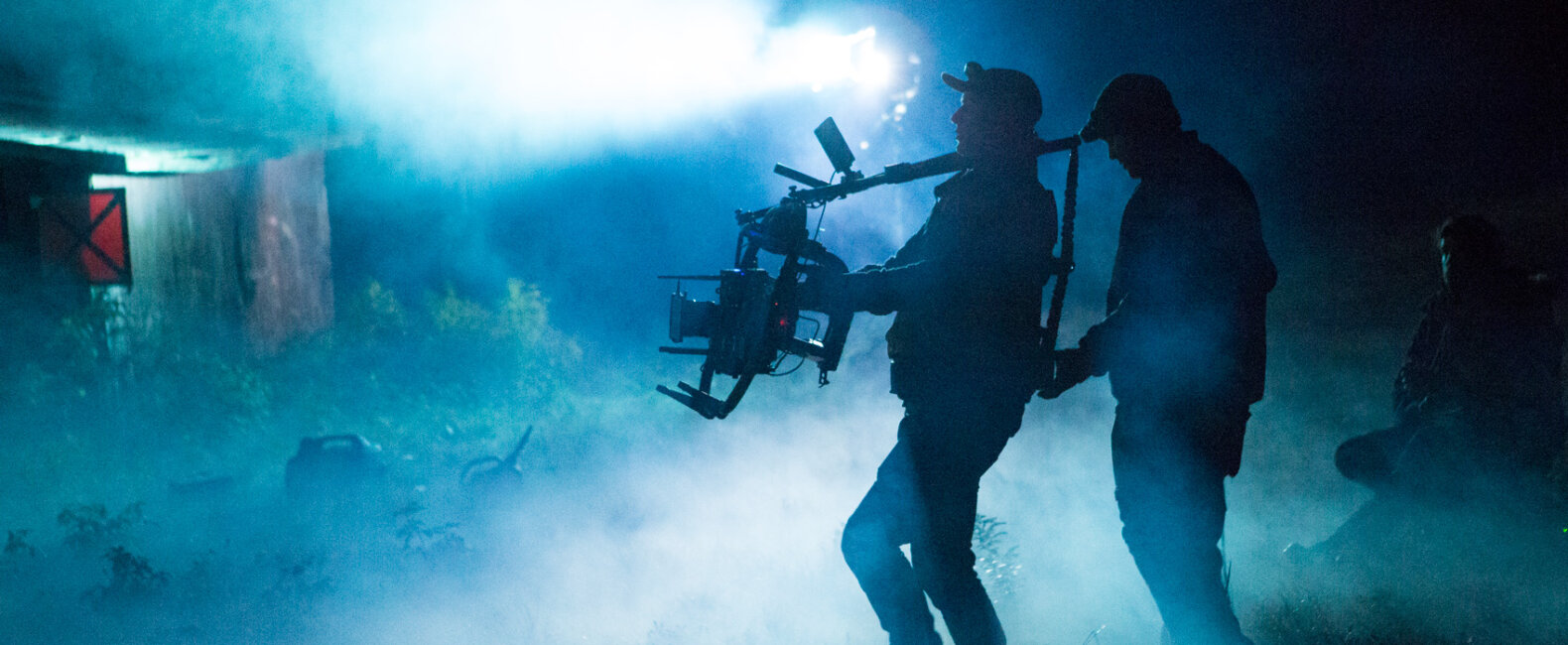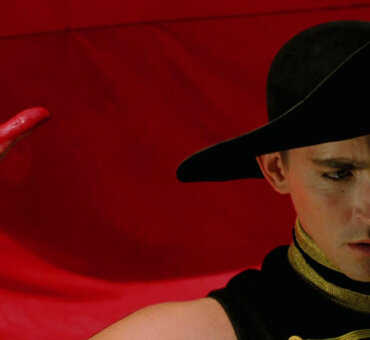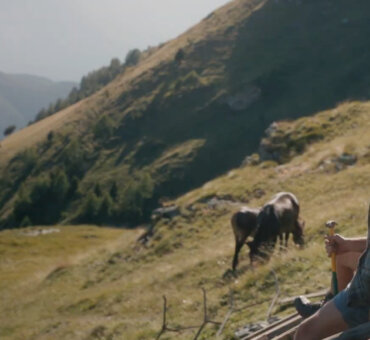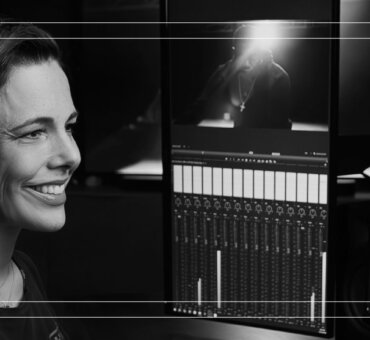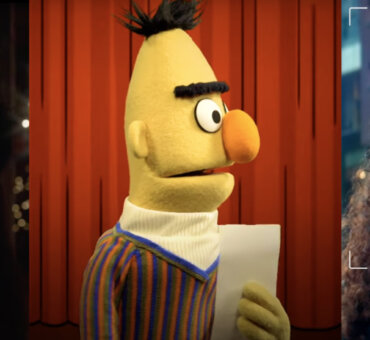It’s surprising, with all the new things that have been done in film, that there are still new things to do. Technology has made the previously impossible commonplace, but it’s also opening up a whole new world of previously unthinkable feats. There are things we can do now that never would have occurred to us to do. For example, strapping battery powered LED lights to a high-speed drone and flying it through a densely wooded forest. But that is exactly what Tim Sessler and Brandon Bray (a.k.a. Brooklyn Aerials did in their latest experimental film, The Light. The results, to put it mildly, are out of this world.
Watch the film below, then read how they pulled it off.
Filmsupply: Where’d the idea for The Light come from?
Tim: Back in 2015, a good friend of mine, Brad Meier, who was working at Freefly at the time, was messing with this ALTA 6. He’d attached a China ball with small LEDs inside of it, and he showed me the footage. Just terrible, low-quality clips. But even then, it was incredible. I’d never seen anything like it. Just an eerie ball of light floating around. He’d put it on a 3-foot-long string so you couldn’t even see the drone. That ended up being the original inspiration for this new film, The Light.
Brandon: Before Tim sent me that initial idea, I’d never thought about putting a light on a drone. The idea blew my mind. Immediately we were both like, “How can we do this?”
How’d you make the rig?
Tim: It was actually really funny. We built it with parts we found in a dollar store. A lot of these Chinese dollar stores have the weirdest LED lights. So we found the brightest ones, wrapped them around a bunch of soda cans, and powered the whole thing with small batteries. Then we took it upstate to test it out. It was like nothing we’d ever seen. Something completely new. But it still wasn’t quite bright enough for what we wanted. We were shooting with an a7S at an ISO of 30,000 or something crazy. It wasn’t sustainable. We wanted to shoot a project on a much better camera than an a7S, so that’s when we started looking into brighter LEDs.
Brandon: Our idea was that this light would basically be a character in the film. But I have to say, the first version was pretty hilarious. It was literally two tall Arizona Iced Tea cans gaffed together with these micro LED stripes roughly wrapped around them. And then we put all of that into a China ball. It was the most ridiculous rig in the world. Prototype 1.0. When we started reworking it, we decided to abandon the hanging element. It created a lot of issues. The light would swing out one way, the operator would counteract it, and then it would swing the other way. Plus there was a lot of risk of it getting caught on something. It wasn’t practical at all.
Tim: For the second prototype, I found these crazy bright LEDs that I had to buy direct from China. I ordered them on Alibaba. They’re incredibly bright and have a much better CRI, so the color looked better than our first prototype. And because we weren’t hanging the lights anymore, the idea was to add lights all around the drone. So there was a cylinder on top and then an LED light strip below.
Brandon: The difference between the first prototype and the second was the difference between driving a ’70s station wagon and a sports car.
Were there any payload issues?
Tim: Actually it’s super lightweight. We were using an ALTA 6, which isn’t a very large drone. It has a payload of 15 pounds, and we were way below that.
You mentioned the light was a character. Was it the villain? The hero?
Brandon: Tim and I wanted it to be this external force that could be interpreted in many different ways. Ultimately, for our two characters it created two distinct situations. One is fear and isolation; the other is expectation and intrigue. The light is doing the same thing, but the characters are reacting to it in very different ways: one is running away from it, one is running toward it. We wanted to play around with the idea that this light character could be good and bad. But it’s all open to interpretation.
What was production like?
Tim: It was the perfect mix between sheer nightmare and the best time of my life. It was super bare bones. We basically got all of our talented friends together and did it on a shoestring. We had a small Airbnb in the Catskills where we all crashed. My wife and family were pitching in with the food. It was pretty intense.
Brandon: We shot on two consecutive nights and then another night in Brooklyn. We weren’t properly prepared for the elements. It was very cold upstate, and the amount of dew on the ground was massive. Everybody was nearly hypothermic.
Tim: On our first night, we were in this pretty dense forest location. We had all of these ideas, and a lot of them worked. But then we had this one last shot where the light is in front of our main character, and it pulls away. As it was pulling away, it got stuck in a giant tree. It was hanging up there, 50 feet in the air. We tried everything to get it down, but there was no way. It was our one and only prototype. There wasn’t another one anywhere in the world. If we couldn’t get it down, production would be over. It was this feeling of total devastation. We could hear it rotating up there — its engine clicking like some animal. That was the worst part. We even talked to the fire department, but they didn’t have a ladder that was tall enough.
Is it still up there?
Tim: We ended up asking for permission from the owner of the property, and then we cut the tree down. It destroyed the drone into a million pieces. And the light was pretty busted too. But with a soldering iron and a bunch of Super Glue, we were able to get it back together again.
A tree was harmed in the making of this film.
Tim: Yeah, unfortunately. But most definitely.
What happened the second night?
Tim: We went to a much more open field. [laughs] We had a bunch of crazy foggers and hazers. We used this 100-foot-long tube called “The Tube of Death,” which is a clear plastic tube attached to a massive industrial fan that pumps fog and haze through all of these holes. Having that element out there ended up being so crucial. Seeing how the light reacted with the fog — it was absolutely incredible. We took a completely experimental approach to shooting this piece. It was all unknowns. So it’s amazing to see so many things work out.
Was all of this practical?
Tim: Yep. 100%.
Could this have been done digitally?
Brandon: I have no idea how an artist would render so many different things. The colors, the movement. It would be a lot more expensive, let me put it that way. The funny thing is, it’s such a surreal scene that it almost looks fake.
The only way to make something so unreal was to really do it.
Brandon: Exactly!
What kind of camera did you shoot on?
Tim: We shot the entire piece on a RED Helium 8K at 3200 ISO, and it still looked incredibly clean. For lenses, we used Summilux wide open at 1.4. For the stabilizers, we had the prototype of the new MōVi Pro that wasn’t yet released at the time. That was really helpful to get those very fast cable cam shots and interesting gimbal shots. It was supposed to have that handheld look, so we used a Freefly MIMIC, which basically transfers the motion of the operator into the camera, which is really cool. And for drones, we had a Freefly ALTA 8 as our camera drone and an ALTA 6 for the light drone.
What’s next, do you think?
Brandon: Tim and I are always cooking up something weird. I always know what’s coming when I get a phone call and he’s like, “What if we….” And I’m like, “Oh, jeez. This sounds expensive.”
Tim: I’m actually building a new drone that’s going to be completely crazy.
Brandon: See?
Tim: It’s going to use lenses in front of larger LEDs to narrow down the beam and create a much more focused, stronger light. The goal is to put that on a MōVi so it will be completely motion controlled. It’s going to be at least 1,000 watts. I’ll try to go to 2,000. A bright super beam. I think it’s going to be really cool.
